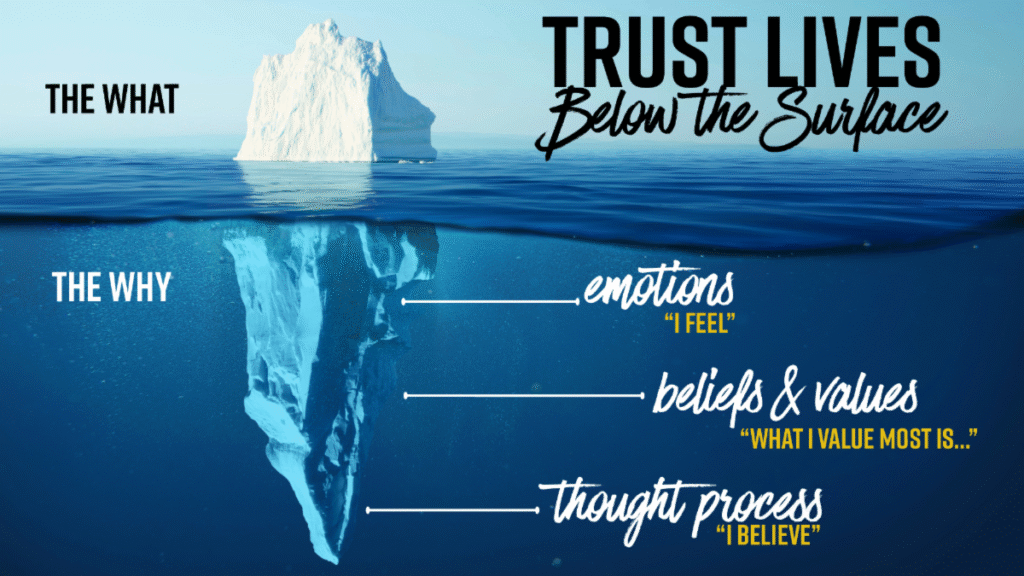I had the privilege of being the keynote speaker at three Buffalo Wild Wings conferences across the United States, and it became one of the most profound examples of emotional leadership and true leadership presence I’ve ever witnessed.

I asked a General Manager on stage, “What’s a moment in your life that you’re proud of how you showed up?” She paused, her eyes filled with tears, and in that quiet moment I witnessed authentic leadership, the kind that shows up human, raw, and real: I stayed with her. I held space. I let her know she was safe. Then, in front of hundreds of her peers, she shared it, the moment she lost her son.
Even in the most heartbreaking chapter of her life, she showed up, leading with trust instead of fear, showing her team what courage looks like. Not because it was easy. Not because she had it all figured out. But because she chose to keep moving, to lead through pain, to be present for her family and herself.
Every time I ask this question, I’m reminded: we are all walking around with a lifetime of invisible triumphs and invisible heartbreaks. She didn’t just share a story—she gave the entire room permission to show up human. Raw. Real.
That’s high trust leadership. Not performance. Not Polish. But the courage to be whole in front of others.
The world doesn’t need perfect leaders. It needs more connected ones.
TRUST TAKEAWAY
Ashley reminded us that when we let people see who we really are, we reveal the importance of developing trust in leadership, trust that comes from honesty, not perfection. After sharing her story, the energy in the room shifted. People approached her, thanked her, connected with her in new ways.
She walked off that stage more trusted—not despite her vulnerability, but because of it.
YOUR TRUST CHALLENGE
I teach a concept called ‘Show Your Why,’ because leadership and trust are built beneath the surface. Real trust in leadership comes from what people cannot see at first glance.
Above the waterline is the what—the visible decisions and actions. But underneath is your leadership communication, the stories and values that shape those choices.
Trust grows when you’re willing to share the why—the emotions, values, beliefs, and stories that shaped your decisions. When people understand what’s below the surface, they stop filling in the blanks with assumptions. They start connecting with you.

Here are 3 ways to go below the water line and build deeper trust.
1. Share the Why Behind What You’re Feeling
Next time you’re in conversation with a friend, partner, or colleague, find a moment to name what you’re feeling—and share the why behind it. When people understand the story beneath your emotion, it activates emotional intelligence and leadership, deepens empathy, and helps in building trust as a leader.
Example: Instead of just saying, “I’m frustrated with how that meeting went,” try “I’m feeling frustrated because I put a lot of thought into that idea, and it mattered to me. I know it might not be the right direction, but I was hoping to feel heard.”
2. Use the “Because” Framework in Conversations
Next time you give direction or feedback, add one sentence that starts with “because.” This tiny word elevates your leadership communication skills, inviting people below the surface with clarity and intention.
Example: “I wanted you to lead this presentation because I’ve seen your clarity in action and I want others to benefit from that.”
3. Let One Value Be Seen
Pick a value that matters to you—like curiosity, compassion, or integrity. Then, before the week ends, tell someone a short story that shows why that value matters to you. Personal stories spark emotional resonance and reflect trust based leadership, the essence of authentic leadership.
Example: “Curiosity has always been my anchor—it’s what got me through a tough time in college when I had no idea what was next.”
WATCH JUSTIN: KEYNOTE SPEAKER ON TRUST
Justin Patton is a trust keynote speaker, leadership coach, and founder of The Trust Architect Group. Through his trademark motto Trust Starts Here™, Justin helps leaders build trust in themselves, with others, and across their culture — so they keep people coming back for more. Learn more at www.justinpatton.com.

